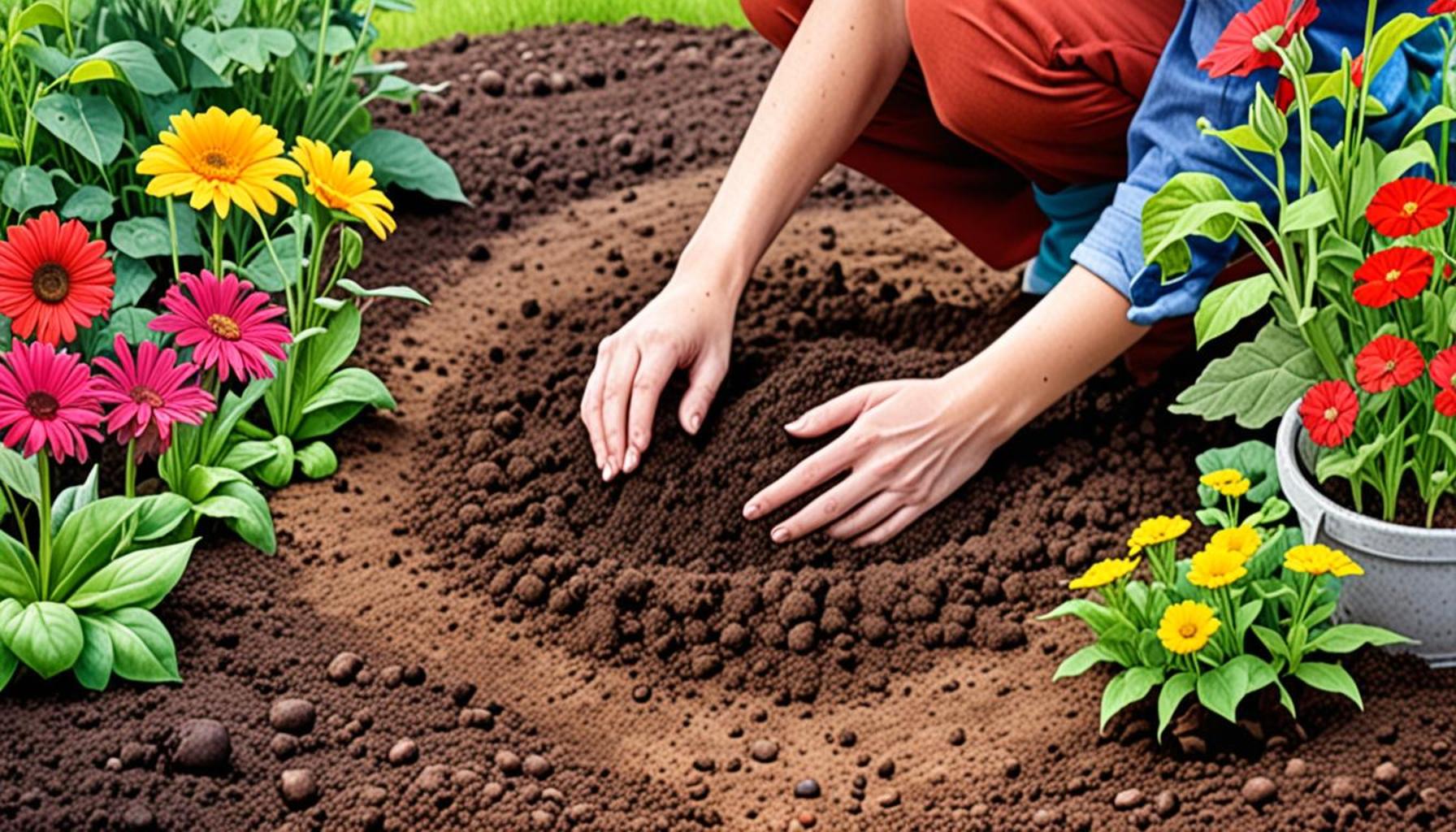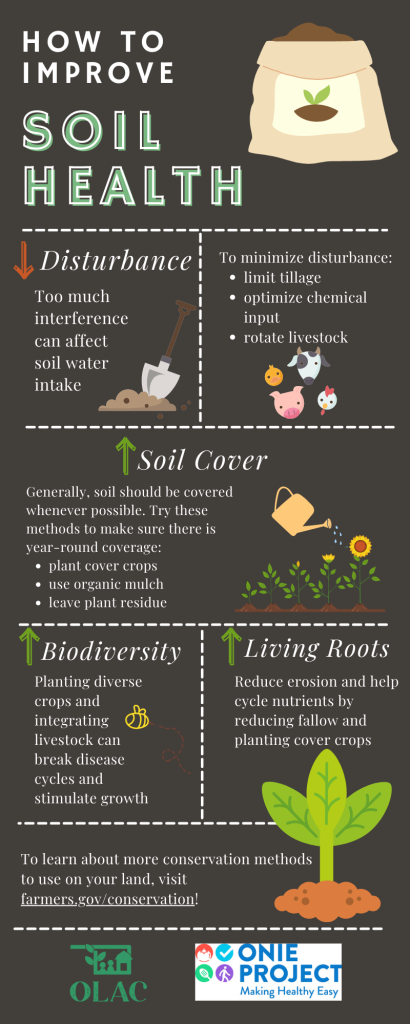The Importance of Soil Preparation for a Healthy Garden: Tips for Beginners

Unlocking the Secrets of Soil Preparation
To cultivate a thriving garden, understanding soil preparation is crucial. Many beginners overlook this essential step, yet it can make or break your gardening success. Properly prepared soil lays the foundation for a vibrant array of plants and flowers.
Why Soil Matters
Soil is more than just dirt; it is a living ecosystem vital for plant health. Healthy soil is teeming with microorganisms, minerals, and organic matter that all play key roles in the garden’s productivity. Here are some key reasons why soil preparation is important:
- Nutrient Distribution: Healthy soil provides essential nutrients such as nitrogen, phosphorus, and potassium that plants need to grow. For example, nitrogen is crucial for leaf growth, while phosphorus promotes root and flower development. Testing your soil can help you understand which nutrients are lacking and how to amend accordingly.
- Water Retention: Well-prepared soil can absorb and hold moisture efficiently, reducing the need for frequent watering. Loamy soil, characterized by its balanced texture, can hold water without becoming waterlogged, making it the ideal medium for many plants. Over time, using organic matter like compost improves this water retention ability significantly.
- Root Development: Loose, aerated soil allows roots to expand freely, leading to stronger plants. Compacted soil can inhibit root growth, making it difficult for plants to take up nutrients and water. By tilling and amending your soil, you create a fertile environment where roots can thrive.
Getting Started
For beginners, the process may seem daunting, but it doesn’t have to be. Following a few straightforward steps can set you on the path to successful soil preparation:
- Test Your Soil: Conducting a simple soil test can reveal the pH and nutrient levels present in your garden. Many local extension services or garden centers offer kits, or you can send samples to labs for a detailed analysis. This knowledge can guide your amendments, ensuring you add what your soil truly needs.
- Amend with Organic Matter: Incorporating compost enriches soil quality naturally. Organic matter not only adds nutrients but also enhances the soil structure, leading to improved aeration and drainage. You can make your own compost at home from kitchen scraps and yard waste, making it an eco-friendly choice.
- Tilling: Turning the soil aerates it and helps mix in nutrients. However, tilling should be done carefully, as excessive tilling can disrupt the soil’s natural structure and its beneficial organisms. A light tilling once or twice a year is often sufficient to maintain healthy soil.
By investing time and effort in soil preparation, you set the stage for a healthy, flourishing garden. Soil that is rich in nutrients and well-aerated allows your plants to access everything they need to grow vibrant and plentiful. Dive deeper into the art and science of this essential gardening practice, exploring various techniques and trends in sustainable gardening that can further enhance soil health.
DISCOVER MORE: Click here for tips on plants perfect for beginners

Understanding the Basics of Soil Preparation
Before you dig in, it’s essential to grasp the fundamentals of soil preparation. This crucial process serves as the backbone of any successful gardening venture. For beginners, getting it right from the start sets the tone for future growth, leading to healthier plants and a bountiful harvest.
The Components of Healthy Soil
To prepare your soil effectively, you need to know what constitutes healthy soil. A well-balanced mixture of minerals, organic matter, and microorganisms creates an environment where plants can thrive. Here are some critical components to consider:
- Minerals: Soil is rich in minerals that provide essential nutrients for plant health. Key elements include calcium, magnesium, and sulfur, each playing unique roles in plant metabolism and overall vitality. For instance, calcium strengthens cell walls, while magnesium is critical for photosynthesis.
- Organic Matter: The inclusion of organic materials, such as compost or well-rotted manure, enriches your soil by adding nutrients and improving its structure. Organic matter not only feeds plants but also promotes a healthy array of soil microbes that contribute to a balanced ecosystem.
- Microorganisms: Beneficial bacteria and fungi are vital for breaking down organic matter, releasing nutrients that plants can absorb. These microorganisms also help improve soil structure, which enhances aeration and water retention. Starting with a biological balance can propel your garden toward success.
Essential Soil Preparation Techniques
Once you understand your soil’s composition, implementing effective preparation techniques becomes paramount. Here are some key steps to follow:
- Clear the Area: Begin by removing any debris, weeds, or old plant material from the garden space. This step prevents competition for resources and ensures that your new plants have adequate room to grow.
- Loosen the Soil: If you’re working with compacted soil, using a garden fork or tiller to aerate it is essential. This process allows for better root penetration and improves water and nutrient absorption. Aim for a depth of about 12 inches for optimal results.
- Incorporate Amendments: After loosening the soil, it’s time to add amendments based on your soil test results. If your soil is lacking essential nutrients or has an unfavorable pH, incorporating specific amendments can help restore balance. Additions like lime (to raise pH), sulfur (to lower pH), or nitrogen-rich materials can help tailor soil conditions for ideal plant growth.
By understanding the vital elements of healthy soil and employing effective preparation techniques, beginners can pave the way for a flourishing garden. As you take the time to prepare your soil, you not only improve your plants’ chances of success but also foster a deeper connection with the natural world. Dive into the practice of preparation and witness the transformation of your garden from the ground up.
The Importance of Soil Preparation for a Healthy Garden: Tips for Beginners
Soil preparation is the unsung hero of gardening, often overlooked by novices eager to plant their seeds. However, understanding and maximizing the health of your soil can significantly increase your garden’s potential. This section delves into the vital steps and techniques that ensure your soil is primed and ready for planting.
First, you must assess your soil quality. Conduct a simple soil test to determine its pH, nutrient levels, and texture. This foundational knowledge allows you to make informed decisions about amendments. If your soil is too acidic or alkaline, it can negatively affect nutrient absorption. A well-balanced pH level (around 6.0 to 7.0 for most vegetables) is critical for optimal plant health.
Next, consider incorporating organic matter, such as compost or well-rotted manure, to enrich your soil. This not only improves soil structure and drainage but also boosts beneficial microbial activity. Organic matter serves as a reservoir for nutrients, releasing them slowly over time, which is particularly beneficial for young plants.
Another essential tip is to practice proper tilling techniques. While tilling can help aerate the soil and incorporate organic materials, over-tilling can disrupt soil structure and harm beneficial organisms. Aim for a balance—till only when necessary and consider using raised beds to minimize soil disturbance.
In addition to these practices, it’s crucial to be aware of the specific needs of the plants you intend to grow. Different plants thrive in different soil conditions, so tailor your soil preparation to meet their requirements. Researching your chosen species will help you understand their specific dietary and environmental needs, ensuring you provide the most supportive foundation for growth.
With these steps, especially geared towards beginners, you can lay the groundwork for a thriving garden. As you embrace the process of soil preparation, you’ll find that nurturing your garden begins long before planting—it’s all about creating the right environment for your plants to flourish.
| Advantages of Soil Preparation | Key Benefits |
|---|---|
| Enhances Nutrient Availability | Unlocks essential nutrients, promoting vigorous plant growth. |
| Improves Soil Structure | Increases aeration and drainage, which helps prevent root rot. |
These insights into soil preparation serve as a stepping stone towards cultivating a fruitful garden. As you become more acquainted with the process, your journey into gardening will become increasingly satisfying.
DISCOVER MORE: Click here to learn about growing herbs at home
Assessing Soil Health and Fertility
To cultivate a thriving garden, understanding your soil’s health and fertility is essential. Regular assessment not only guides your soil preparation efforts but also provides insight into how to amend and enhance soil quality over time. By evaluating specific characteristics of your soil, you can make informed decisions that suit your gardening needs.
Conducting Soil Tests
One of the most effective ways to assess your soil’s health is by conducting a soil test. These tests analyze the nutrient levels, pH balance, and organic matter content. Most local extension services or garden centers in the United States offer soil testing kits, allowing you to send samples for a thorough analysis. Here’s what you need to consider:
- Nutrient Levels: Soil tests provide detailed information on essential nutrients such as nitrogen, phosphorus, and potassium (the N-P-K ratio), allowing you to tailor your amendments effectively.
- pH Balance: The pH level influences nutrient availability. Most garden plants prefer a pH of 6.0 to 7.0. Adjusting pH through lime or sulfur can significantly impact plant growth.
- Organic Matter Content: Knowing the organic matter percentage helps assess soil structure and water retention capabilities, enabling you to make strategic decisions on adding compost or other organic materials.
Creating a Custom Soil Amendment Plan
Once you have the results from your soil test, you can develop a custom soil amendment plan. Here are some components to include:
- Adding Compost: Regardless of your soil condition, incorporating compost is beneficial. It boosts organic matter levels, supports microorganisms, and enhances soil structure.
- Using Cover Crops: Planting cover crops during the off-season, such as clover or vetch, can help improve soil quality. These plants not only prevent erosion but also fix nitrogen in the soil and improve fertility when tilled back into the ground.
- Incorporating Mulch: Organic mulch, such as straw or wood chips, acts as a protective layer over the soil. It retains moisture, suppresses weeds, and adds organic matter as it decomposes over time.
Seasonal Soil Preparation
Soil preparation is not just a one-time task; it’s an ongoing process that should be adapted to the seasons. For beginners, timing your preparations can greatly influence the success of your garden:
- Spring Preparation: As the weather warms, perform a thorough soil check. Apply compost and any necessary amendments, ensuring the soil is well-aerated and ready for planting.
- Summer Maintenance: During the growing season, monitor plant health for signs of nutrient deficiency. Side-dress with organic fertilizers or compost to support your plants’ ongoing needs.
- Fall Preparation: After harvesting, consider incorporating beneficial cover crops and layers of mulch. This practice not only protects your soil but also prepares it for a nutrient-rich start for next spring’s planting.
By actively engaging in soil assessment and applying customized soil amendments throughout the year, beginners can significantly enhance their gardening experience. The time spent on soil preparation pays off with robust plants, vibrant blooms, and healthy produce, fostering not just a successful garden but also a deeper appreciation for the art of gardening itself.
DISCOVER MORE: Click here to enhance your garden
Conclusion
In the pursuit of a thriving garden, the significance of soil preparation cannot be overstated. As outlined in this article, understanding your soil’s health, conducting regular tests, and implementing a personalized amendment plan are foundational steps that can dramatically improve the quality of your gardening experience. Each season brings unique opportunities to enhance soil fertility through various techniques like composting, cover cropping, and mulching, ensuring that your garden is not merely surviving but thriving.
Furthermore, a well-prepared soil contributes to plant vitality, yielding bountiful harvests and beautiful blooms. This not only satisfies the desire for aesthetic appeal but also fosters a sustainable gardening practice that respects the intricate eco-systems within the soil. For beginners stepping into the world of gardening, investing time in soil preparation will not only lead to healthier plants but also pave the way for a deeper connection with nature.
As you venture into your gardening journey, remember that patience and observation are crucial. The knowledge gained from your soil assessments will empower you to adapt and refine your strategies over time. Embrace this learning process, and take pride in watching how your efforts in soil preparation cultivate not just a garden, but a thriving ecosystem, further igniting your passion for this rewarding endeavor.



